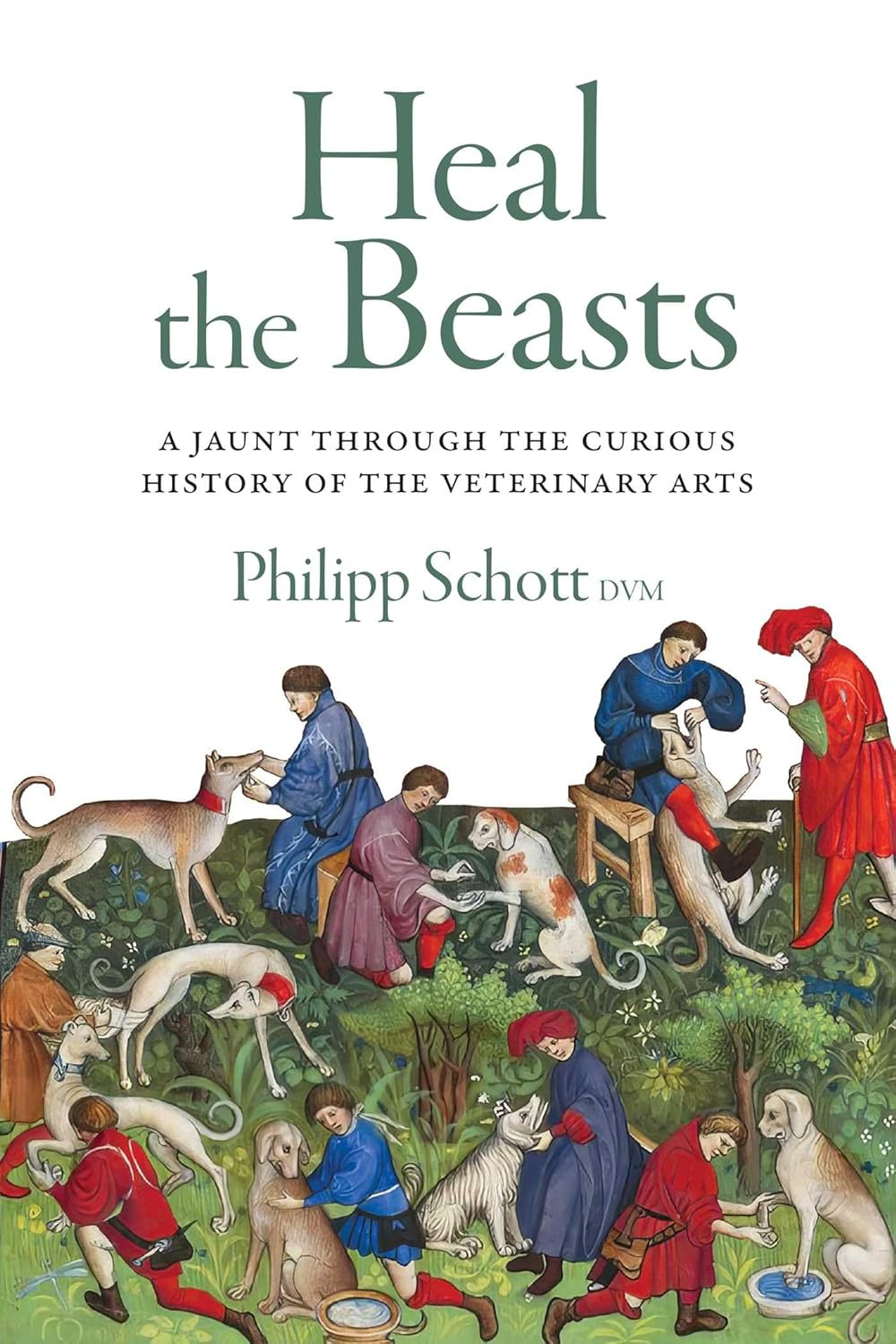Heal the Beasts by Philipp Schott, DVM
A Jaunt Through the Curious History of the Veterinary Arts
In Heal the Beasts: A Jaunt Through the Curious History of the Veterinary Arts, Philipp Schott, DVM, offers a high-level history of the evolution of the veterinary profession. Schott profiles 22 people who have been involved in health management for animals over the centuries. He also explores how our attitudes toward animals have changed over time.
“Heal the Beasts is written with a generous dose of witty humour, which renders Schott’s writing both personable and enjoyable.”
At the start of each chapter, Schott includes a vignette bringing to life an event related to one specific practitioner. These vignettes convey nuances about the person’s demeanour and approach, as well as grounding us in the timeline through details in the setting. Of course, some of these re-imaginings require an effort of imagination, but even here, the imagination is well-founded, drawing on the diaries or writings of the person being discussed or other historical resources.
Within each chapter, Schott discusses advancements or developments in veterinary medicine, both with respect to the featured vet, and elsewhere. Geographically, Schott touches on Great Britain, India, Europe, China, Canada, the United States, and other locales. We see animal practitioners relying on incantations and practices that may seem bizarre now, but we also see people using methods based on the knowledge of the day that would still be relevant in modern times. Though some motivation early on was practical—looking after cavalry horses, hunting hounds, or cattle, for example—it was also often motivated by a level of affection for the animals in question.
Schott’s book is wide-ranging, taking us from prehistory to the present, with the final chapter discussing Dr. Gladys Kalema-Zikusoka, a wildlife vet in Africa. The evolution of veterinary medicine was not linear. Some ancient methods fell out of practice before being later rediscovered, and some methods were developed independently in different regions. Schott points out that certain diseases cropped up time and time again. One such example was rinderpest, a cattle plague, which wasn’t eradicated globally until 2011.
Some animal healers covered in the book may be known to readers. One example is James Herriot of All Creatures Great and Small and other books. James Herriot was a pseudonym used by a veterinarian named Alf Wight, and one of the chapters in Heal the Beasts is devoted to Wight and his veterinary practice. Heal the Beasts also profiles Dr. Harry Colebourn, the one-time owner of a bear named Winnie, who later became the inspiration for the Winnie-the-Pooh stories. Colebourn served in the Canadian Army Veterinary Corps in World War I.
Heal the Beasts describes a woman in ancient times, in what would later become Germany, treating a puppy for distemper. Schott profiles Dr. Louis Camuti, who became the first veterinarian to specialize in cats when he opened his Manhattan practice in 1933. Claude Bourgelat, often cited as the “Father of Veterinary Medicine,” gets a chapter, as does Vegetius, a Roman who treated the ailments of horses. Gaston Fébus, who wrote Livre de chasse (Book of the Hunt) is also among the individuals profiled.
Many of the chapter-starting vignettes convey something unique or significant about veterinary medicine of the time. In the case of Wight’s chapter, for example, the vignette demonstrates the effectiveness of penicillin in treating maladies. Penicillin was just starting to be used during Wight’s time.
Heal the Beasts is written with a generous dose of witty humour, which renders Schott’s writing both personable and enjoyable. Though he is quick to acknowledge he is not a historian by trade, Schott conveys a depth of knowledge when it comes to veterinary practices through the ages.
Heal the Beasts includes footnotes as well as a section with “Sources and Further Reading.” There are also a number of photos near the end of the book, with cut-lines explaining the historical significance of each. Readers interested in the veterinary profession, historical nonfiction, or animals in general should find Heal the Beasts entertaining and informative.
About the Author
Bestselling author of The Accidental Veterinarian, Philipp Schott was born in Germany but grew up in Saskatoon. He now lives in Winnipeg where he practises veterinary medicine, writes, and shares an old house on the river with his wife, two teenagers, three cats, and a dog.
About the Reviewer
Lisa Timpf lives in Simcoe, Ontario, where she writes poetry, book reviews, short stories, and creative nonfiction. Lisa’s speculative poetry collections Cats and Dogs in Space (2025) and In Days to Come (2022) are available from Hiraeth Publishing. Lisa is a member of SF Canada and the Science Fiction and Fantasy Poetry Association. You can find out more about Lisa’s writing projects at http://lisatimpf.blogspot.com/. Lisa is also on Bluesky, @lisatimpf.bsky.social
Book Details
Publisher : ECW Press
Publication date : July 8 2025
Language : English
Print length : 232 pages
ISBN-10 : 1770417834
ISBN-13 : 978-1770417830





This sounds rather intriguing.